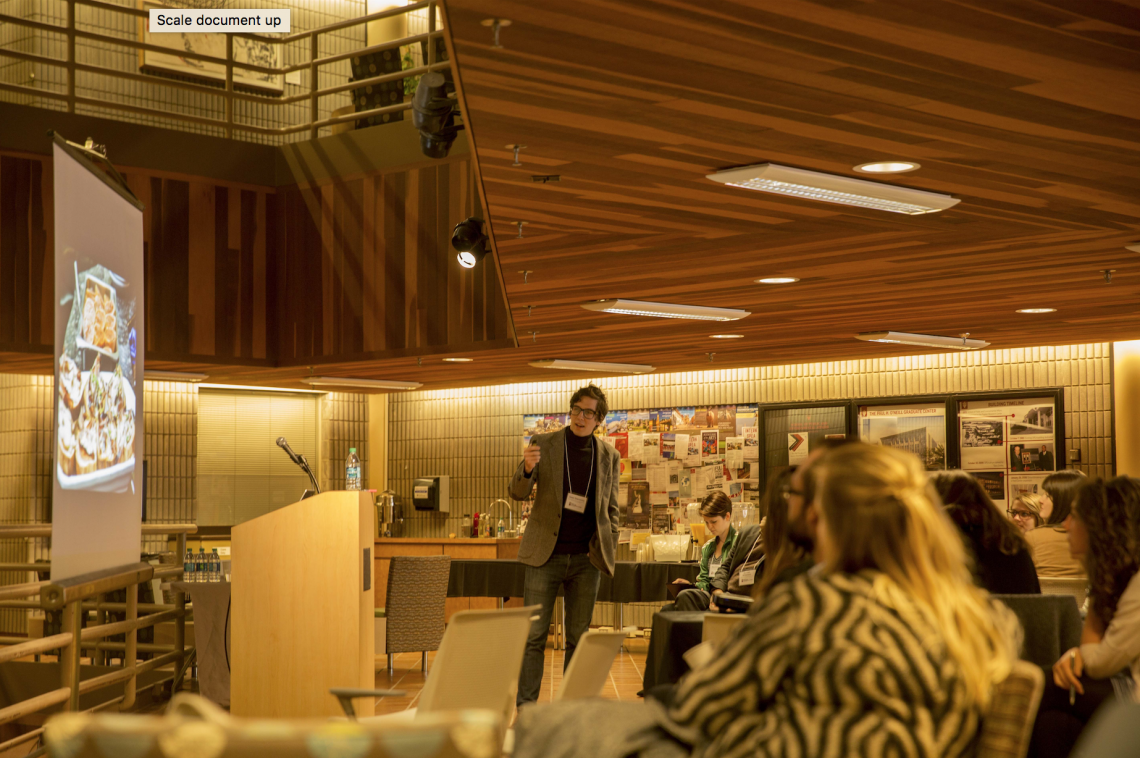
In the weekend preceding the election that revealed such division in our nation, a group of arts administrators – students, teachers, and professionals – gathered together for the Arts Administration Symposium at Indiana University Bloomington’s School of Public and Environmental Affairs. The Symposium is an opportunity to bring together those with a stake in arts and culture to discuss and reflect upon its importance, its impact, and its current situation. I had the pleasure of helping plan and execute this event, and it was powerful to hear a collective message from our speakers about the many ways in which the arts can bring us together across the boundaries that often divide us, and to catch a glimpse of the work that yet must be done.
Jen Cole, Executive Director of Metro Arts in Nashville, Tennessee delivered a powerful account of the work Metro Arts is doing to dismantle the inequitable systems that govern how art is created, supported, and accessed in Nashville and beyond. She spoke of their process, pain, and ultimate progress in facilitating dialogue, finding common languages, and creating a place and opportunity to talk about race and privilege as part of their work as an Arts Commission.
Ursula Kuhar (Professor of Arts Administration at IU Bloomington) and Joanna Taft (Harrison Arts Center, Indianapolis, IN) shared their compelling experiences pursuing diverse and equitable access to the arts, the obstacles they met, and the successes, too. They charged us to think about how to foster and celebrate community-based culture and enable people to experience belonging, ownership, and agency in the arts.
Bringing his perspective as a practitioner and an administrator, Sean Starowitz, Assistant Director of Economic Development for the Arts for the City of Bloomington, prompted us to think about the role of an artist in her community. What do artists sense and see that others may not? He related instances of his work that prompted thoughts about quantifying the unquantifiable, bringing silent issues to light, and the importance of artists telling the full history of a place as they engage with it.
Michael Rushton, Director of Strategic Planning and Associate VP of Academic Affairs at IU, addressed our anxiety about metrics by asserting that “Smiles are a great metric,” especially if that’s what you ultimately want to achieve. In the end, what matters is that we measure what we actually care about, and that these metrics help us progress toward our goals.
Finally, Jamie Bennett, Executive Director of ArtPlace America, inspired us with his insights into the work of creative placemaking, and what it reveals about why the arts matter in every community, no matter the size. I was particularly struck by his insight that “artists are the only asset that exist in every community,” and therefore can be helpful in strengthening the social, physical, and economic fabric of all communities. The specific projects Jamie cited demonstrated the power of cross-sectoral work; when artists work with other community stakeholders to invest in places, connections are formed that otherwise would not have been. The arts create opportunities for “integration without assimilation,” and these opportunities are critical for overcoming the divisions in our nation.
Though the world around me seems so painfully divided, I am encouraged by what I heard and witnessed as this gathering of creative individuals reflected together. We have the tools to be part of the solution – let’s go!
Anne Stichter is a second-year graduating student in the Indiana University School of Public and Environmental Affairs' Arts Administration Program. After growing up in France and London, England, she graduated from Anderson University with a degree in Theater and Psychology. Anne is passionate about how participation in the arts creates community and transforms lives, and plans to pursue this passion in all that comes next.
About Indiana University’s Arts Administration Program
Since 1971, Indiana University’s Arts Administration Program has educated leaders in the cultural life of the U.S. and the world. Situated in the top-ranked IU School of Public and Environmental Affairs (SPEA), the Master of Arts in Arts Administration (MAAA) Program combines rigorous, interdisciplinary training in public and nonprofit arts management, explorations of key policy issues, and hands-on work experiences with cultural organizations. For more information visit our website, program blog, or connect with us on Twitter.





